The dashboard in the shape of a broadly sweeping arc is covered with a premium textile and extends across the entire front end. The entire surface of the arc is used to provide the driver with all the information he needs for his work. When the Vision Van is in stand-by mode, the arc appears as a continuous blue surface with a black colour gradient. When the vehicle is in operation, the arc lights up and shows a tachometer, route planning information and drone flight data, for example.
The vehicle also communicates with the driver via the cabin floor. By way of a special effect LED indicators shine in the stainless steel floor, signalling to the driver whether pedestrians or cyclists are approaching, for example. At the rear wall of the driver's cabin are the package dispenser and the driver's info terminal providing all the relevant information on the delivery process. This terminal serves as a means of communication between the Vision Van's autonomously functioning system environment and the driver, who is able to concentrate fully on the manual delivery task at hand. It also performs the role of a central control unit to interlink the intelligent vehicle, the automated systems and the information relating to the delivery orders to be carried out.
Keynotes Van Innovation Campus
Revealing the Mercedes-Benz VisionVan
,xPosition=0,yPosition=0.5)
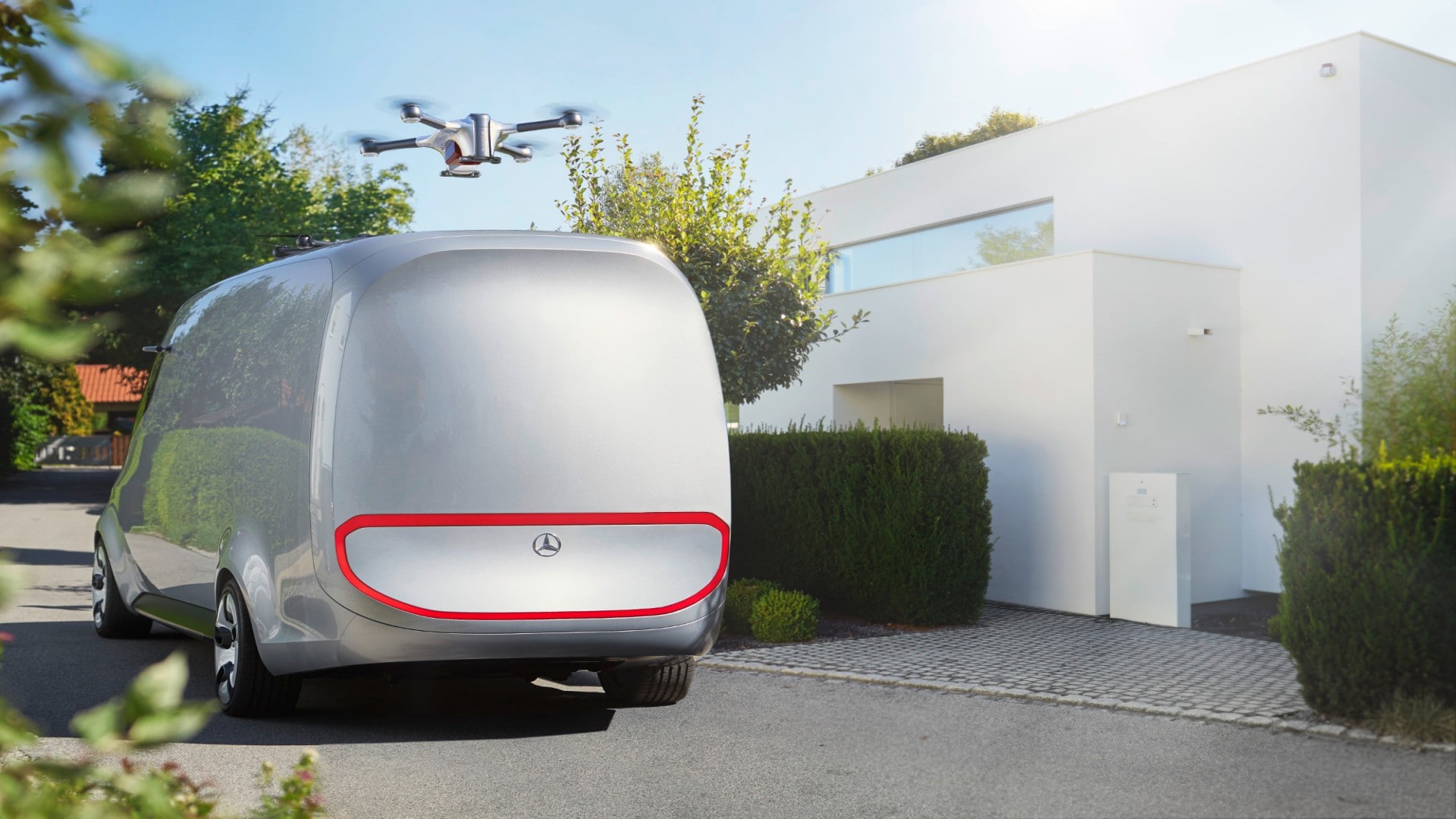
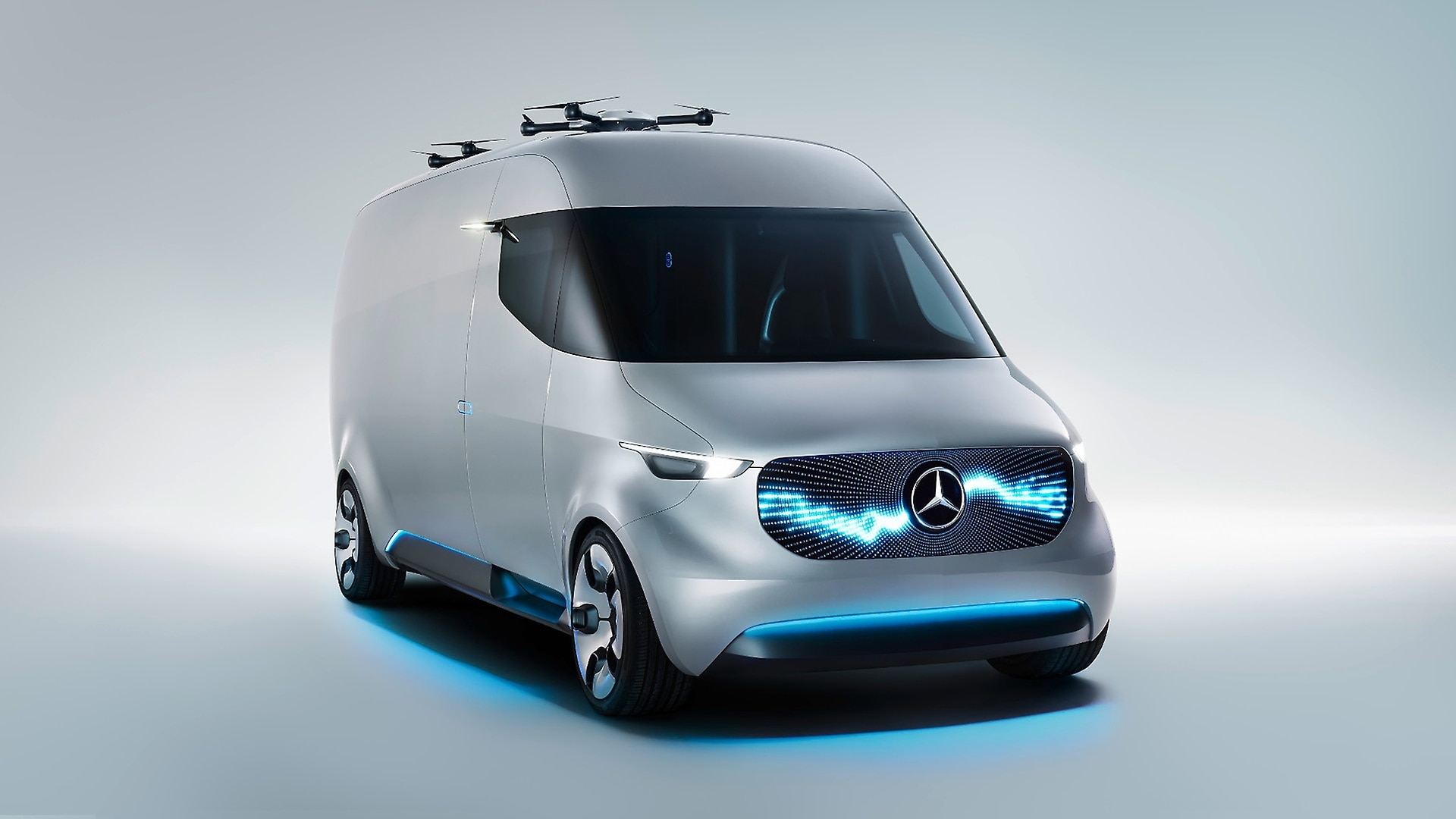

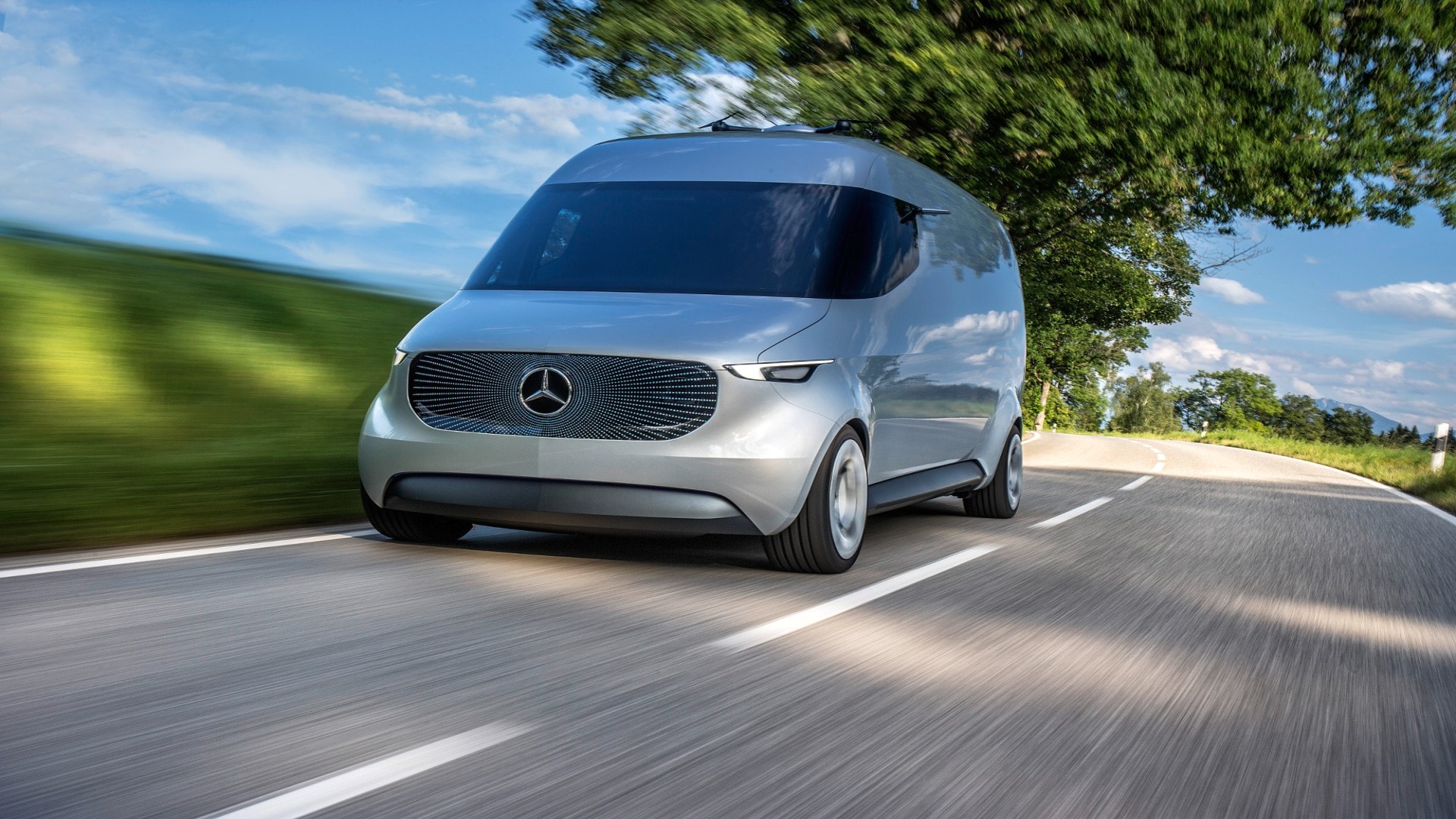
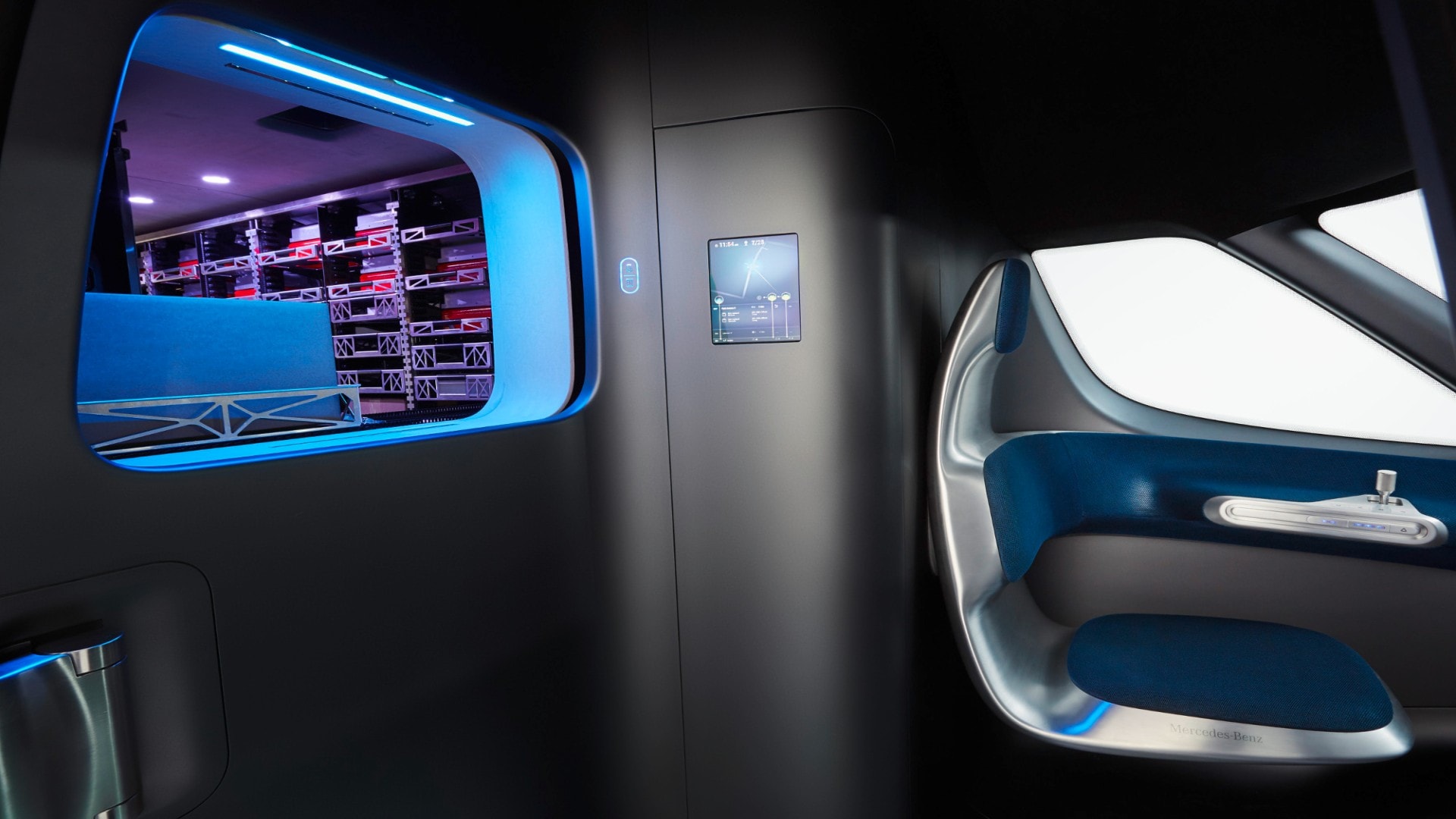
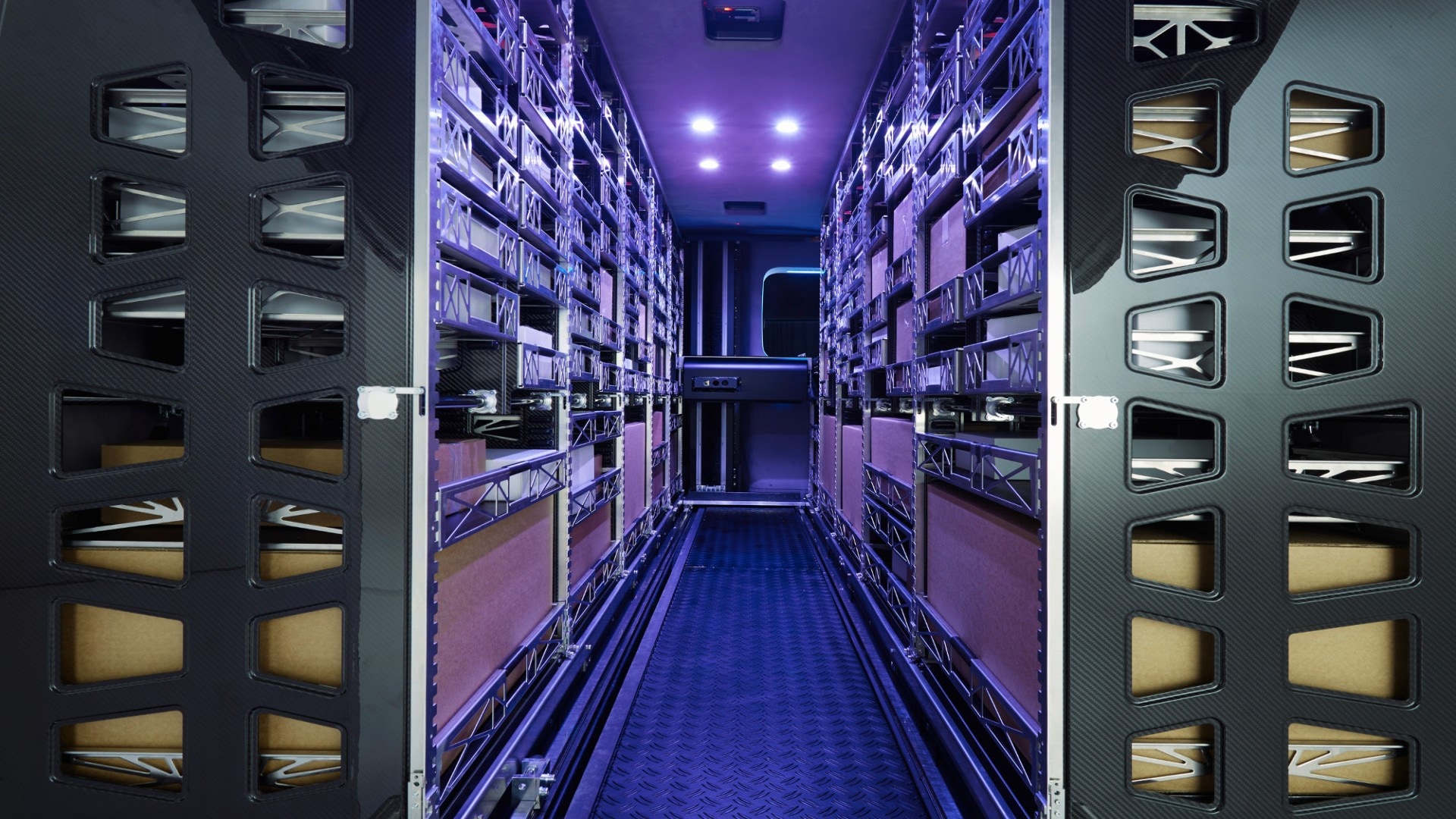
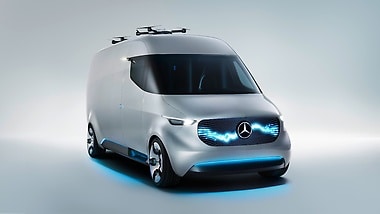
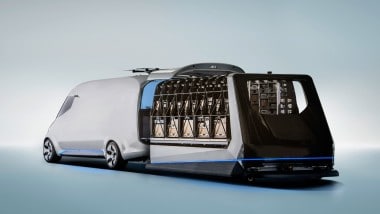
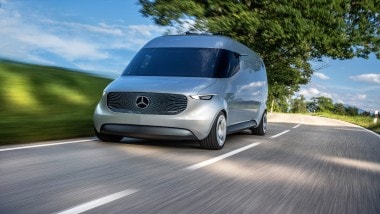
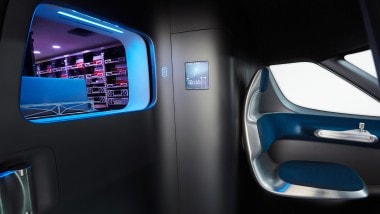

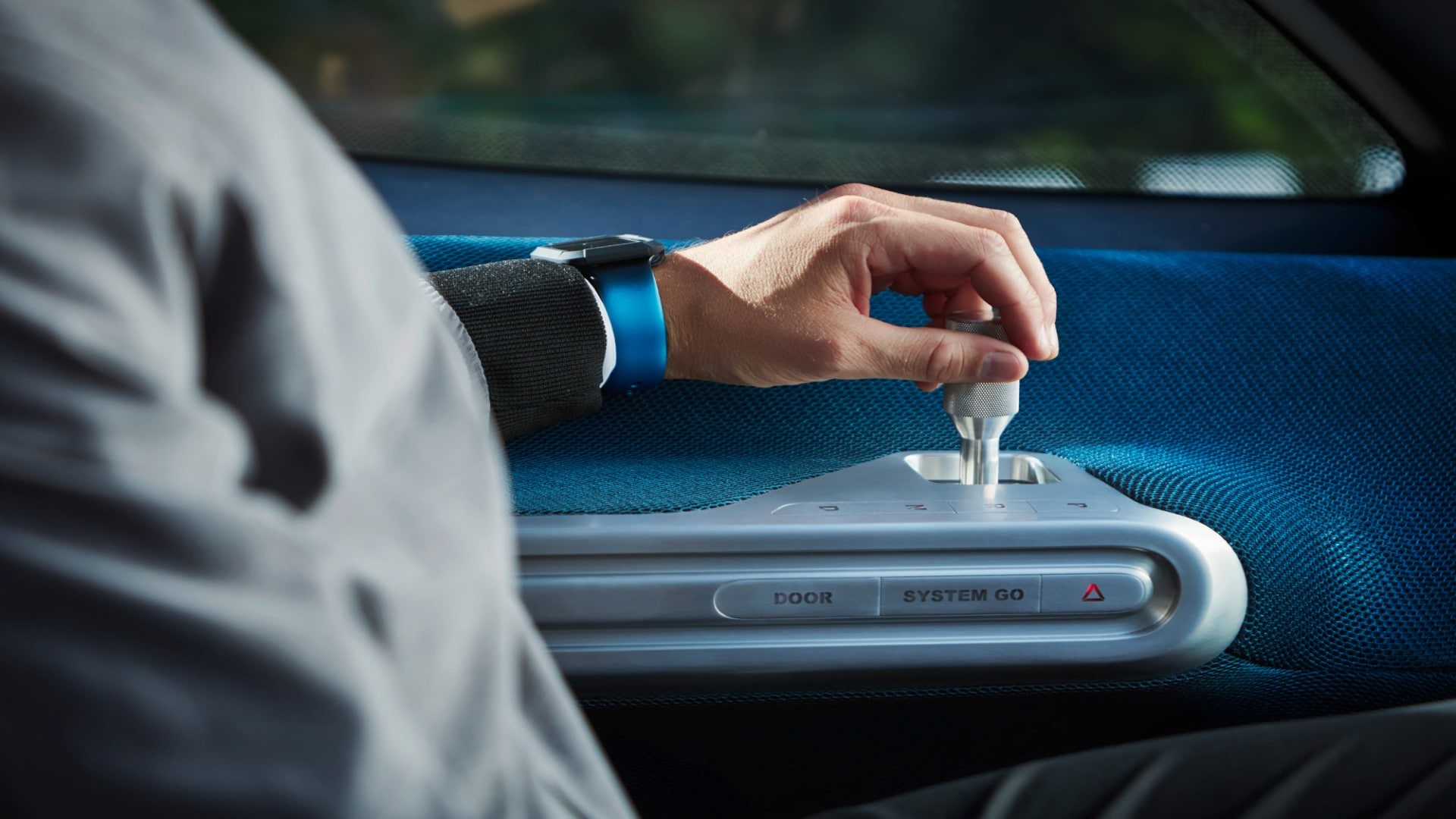
,xPosition=0.5,yPosition=0)